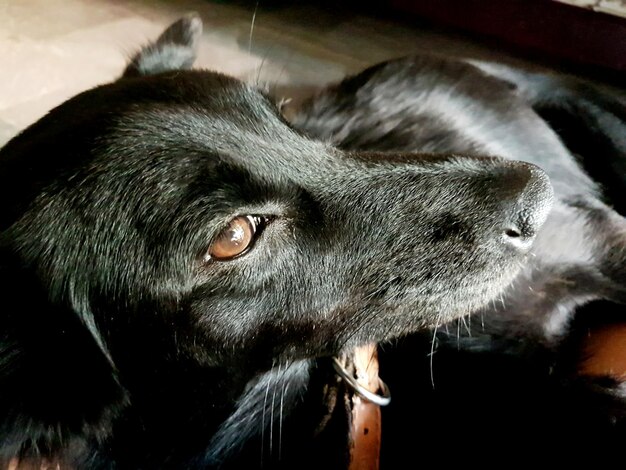The Real Cost of Dog Eye Cataract Surgery: What to Expect and Consider
If you're a pet owner and your dog is showing signs of cataracts, you're likely concerned about their health and vision. Cataracts can be distressing, leading to partial or complete blindness if left untreated. Naturally, you're considering solutions, and cataract surgery might be on your radar. But how much does dog eye cataract surgery actually cost? Let's unpack the financial aspects, the factors influencing the costs, and what you should know if you decide to pursue this procedure for your furry friend.
Understanding Cataracts in Dogs
What Are Cataracts?
Before diving into the costs, let's clarify what cataracts are. Cataracts involve the clouding of the lens inside the eye, which impairs vision and can lead to blindness. While cataracts are commonly associated with aging, they can also occur due to genetic factors, diabetes, or trauma to the eye.
Symptoms to Watch For
As a pet owner, noticing early symptoms can be crucial:
- Cloudy or bluish-gray eyes: This is the most obvious sign.
- Clumsiness: Your dog might bump into things more often.
- Reluctance to move or play: Vision impairment can lead to changes in behavior.
Identifying these symptoms early can help in making a timely decision about seeking veterinary care.
The Cost Breakdown of Dog Eye Cataract Surgery
Average Surgery Costs
The cost for cataract surgery in dogs can vary significantly depending on several factors. On average, you might expect costs to range from $2,700 to $4,000 per eye. This includes pre-surgery examinations, the surgery itself, and post-operative care.
Factors Influencing the Cost
Geographical Location: Veterinary services prices can differ greatly depending on where you live. Urban areas tend to have higher costs than rural locations.
Veterinary Expertise: A board-certified veterinary ophthalmologist with years of experience might charge more for their expertise and high success rates.
Pre-Surgery Testing: These might include blood tests, ultrasonography, and an ophthalmic exam, all of which add to the overall cost.
Post-Surgery Care: This involves follow-up visits, medications, and sometimes, additional treatments such as anti-inflammatory eye drops.
Insurance Coverage: If you have pet insurance, your plan might cover part of the cost, reducing out-of-pocket expenses significantly.
Potential Additional Costs
It's essential to anticipate any additional costs associated with complications or extended care:
Complication Treatments: Although uncommon, complications can occur, requiring additional treatment and costs.
Follow-up Appointments: These are generally factored into the initial cost, but extra visits can add up.
Are There Alternatives to Surgery?
For some pet owners, the cost of surgery might not be feasible. Fortunately, there are alternatives to explore:
Medical Management
Managing cataracts medically might not cure them but can help delay their progression. These methods may include:
Dietary Supplements: Antioxidants and specific vitamins might support eye health.
Anti-inflammatory Medications: Can help reduce associated pain and discomfort.
Non-Surgical Options and Palliative Care
Vision Aids: Like sunglasses designed for pets to reduce glare, aiding in better vision.
Environmental Adaptations: Keeping the environment consistent and decluttered so that your dog can navigate safely.
How to Prepare for Cataract Surgery
If you decide that surgery is the best option for your pet, preparation is key:
Pre-Surgery Steps
Consult with a Specialist: Ensure your ophthalmologist is experienced with cataract surgeries.
Health Assessments: Comprehensive health checks ensure your dog is a good surgical candidate.
Plan Recovery Space: A quiet, comfortable area for recovery will help reduce stress post-surgery.
Financial Planning
Budgeting: Start by getting multiple quotes to understand the full financial implications.
Insurance Review: If you have insurance, review the policy to confirm what’s covered.
Payment Plans: Some veterinary practices offer financing options to make the cost more manageable.
Aftercare and Recovery
Successful cataract surgery can significantly improve your dog's quality of life, but post-op care is crucial:
Post-Surgery Considerations
Follow-Up Visits: These ensure the healing process is on target and complications are minimal.
Activity Restrictions: Limiting your dog's movement prevents complications as they recover.
Monitoring for Signs: Keep an eye out for signs of discomfort or complications and contact your vet immediately if they arise.
Long-Term Eye Care
Regular Eye Exams: Necessary to monitor ongoing eye health and any other age-related changes.
Nutrition and Supplements: Continue supporting eye health with recommended dietary adjustments.
Key Takeaways & Tips for Pet Owners
Here’s a handy summary to guide your decision-making process about dog cataract surgery:
🧡 Early Detection: Spotting symptoms early can lead to better outcomes.
💰 Cost Variability: Be prepared for price discrepancies based on location and expertise.
🔍 Explore Alternatives: Consider all options, including non-surgical methods, if cost is a concern.
📝 Comprehensive Planning: Proper financial and recovery planning can ease the process.
🏡 Post-Op Support: Creating a stress-free recovery environment is crucial for healing.
This journey can be overwhelming, but the restored vision and quality of life for your dog are often worth the investment. Weigh your options carefully, consult with professionals, and choose what best aligns with your pet's needs. Remember, informed decisions can help your furry friend lead a happier, more comfortable life.
